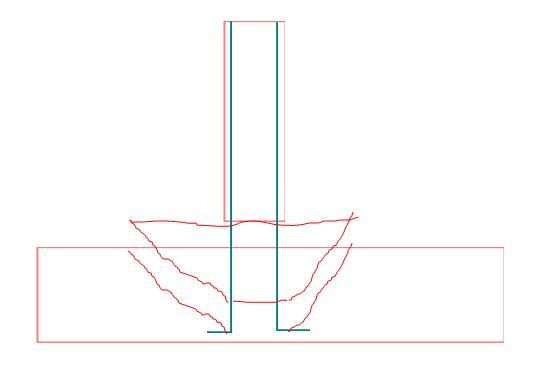I have a concrete column which has tension in it when under seismic load. Obviously I am using the vertical reinforcement in the columns to carry all of the tension. The column is pin-connected to a pad footing at its base. The footing has a double mat of reinforcing (top and bottom) since it could be in positive or negative bending depending on the circumstance. Normally I would just hook the column reinforcing into the bottom of the footing (basically, I lap the hook with the bottom footing reinforcing). Since this column has tension in it, my question is about development length in this case. I need the column vertical steel to be fully developed because they are maxed out in their tension capacity. For the development length in the footing, do I take it as the distance from the bottom of the hook to the top of the footing? Or do I take it as the distance from the bottom of the hook to the top mat of footing reinforcing?
As an example, suppose I have a 14" thick footing, and the top and bottom mats of reinforcing are both 3" from the top/bottom of the footing. So the column vertical reinforcing is hooked (14" - 3") 11" into the footing. Am I safe to assume my development length for tension is 11"? Or do I have to take off another 3" to account for the inset of the top reinforcing as well?
I've always thought that in this case, the development length should only be 8" because the tension in the column steel needs to transfer to the footing steel, so it wouldn't start to be developed until it crosses it. But maybe I'm overthinking it. I'd appreciate other people's opinions. Thanks.
As an example, suppose I have a 14" thick footing, and the top and bottom mats of reinforcing are both 3" from the top/bottom of the footing. So the column vertical reinforcing is hooked (14" - 3") 11" into the footing. Am I safe to assume my development length for tension is 11"? Or do I have to take off another 3" to account for the inset of the top reinforcing as well?
I've always thought that in this case, the development length should only be 8" because the tension in the column steel needs to transfer to the footing steel, so it wouldn't start to be developed until it crosses it. But maybe I'm overthinking it. I'd appreciate other people's opinions. Thanks.



